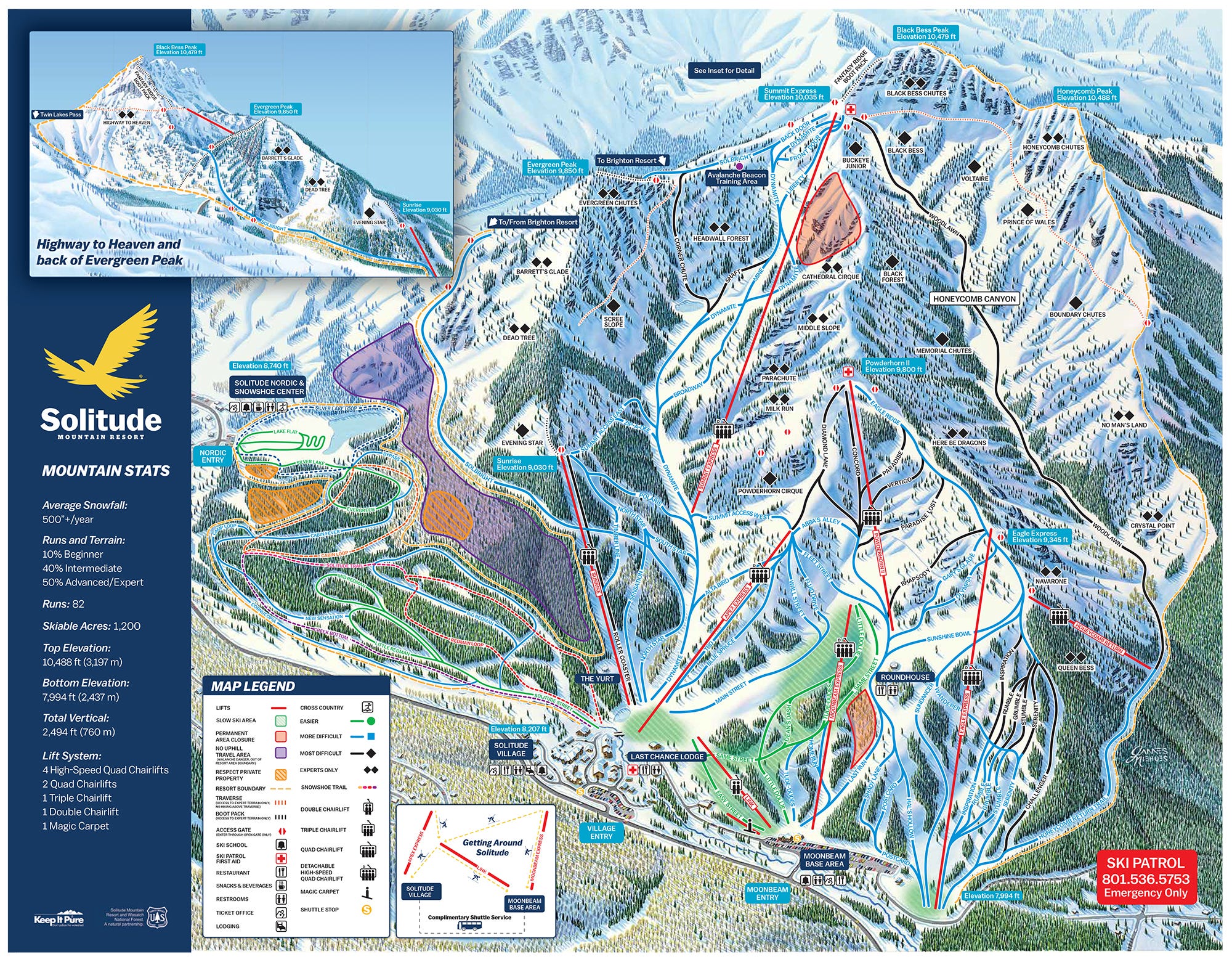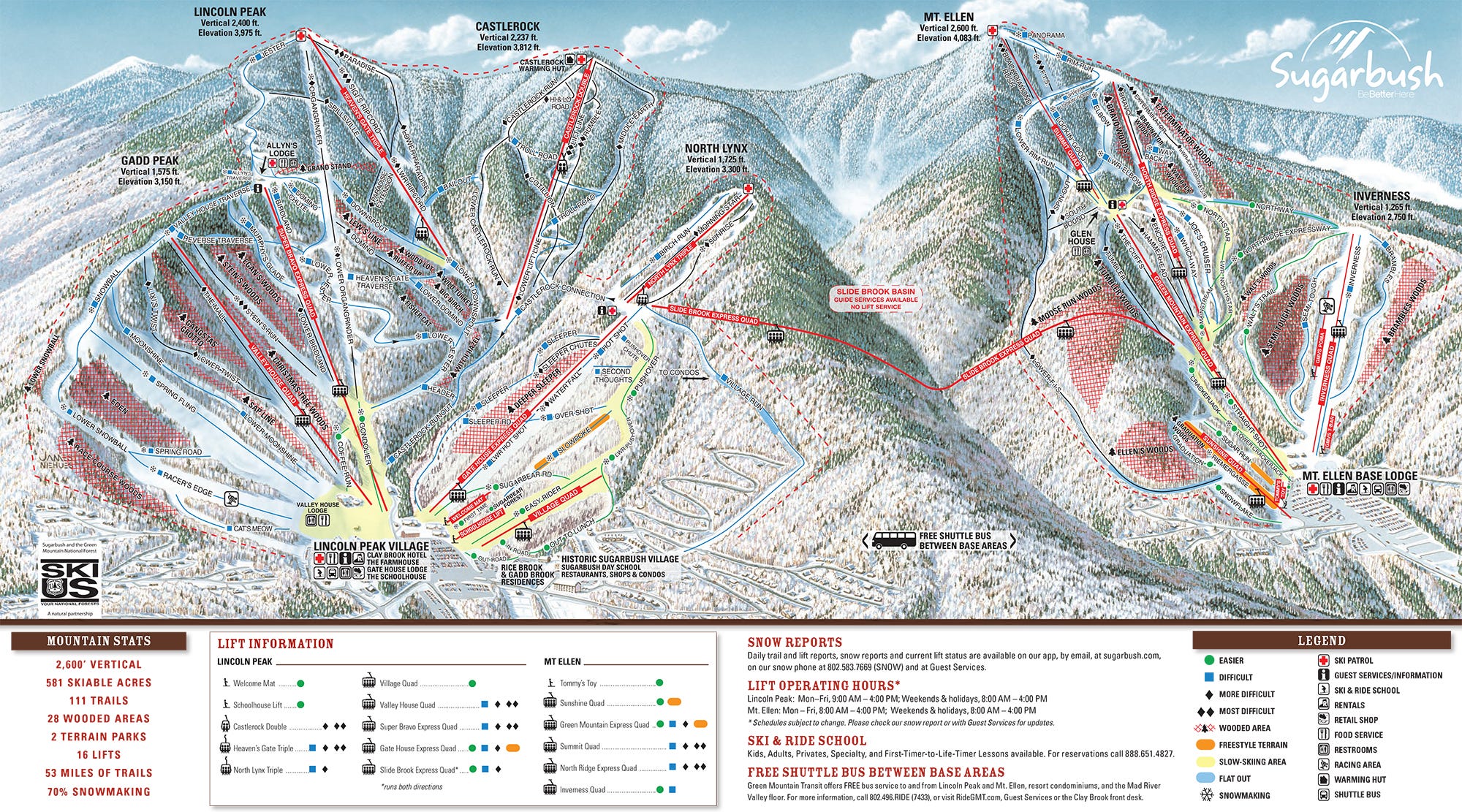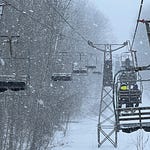The Storm Skiing Podcast is sponsored by Spot and Mountain Gazette - Listen to the podcast for discount codes on subscriptions and merch.
Who
Amber Broadaway, President and Chief Operating Officer of Solitude Mountain, Utah
Recorded on
February 28, 2022
Why I interviewed her
Because upon returning from my last dazzling trip up the Cottonwoods I scrawled this recollection in an early issue of The Storm Skiing Journal:
And the most amazing part of all this is after leaping half mad with joy down the snowy majestically treed hillsides through endlessly refilled powder so deep you can’t find the bottom with a pole stuck handle-deep into the incline, you descend from this frozen kingdom thousands of feet but only dozens of minutes to bland and sprawling Salt Lake City, not a snowflake on the ground, the whole of it so jarring and typically American that it’s hard to believe in the majestic land you just left. This is not like driving up to Killington from Rutland on an October or June day and being like, “Cool there’s snow,” which is a novelty and a triumph of technology. This is more Disney, more Tolkien, like a land where there’s realms and each realm is themed and magnificently distinct even though they appear stacked one after another on ancient hand-drawn scroll maps marked with dragons and sailing ships and skulls. And down below is the realm of the Big Box and the interstate wide and flat, and above is the Winter Realm, a triumph of nature, where a snow trap tens of millions of years in the making spins out a microclimate so wild and improbable and brilliant that the only way to believe in it is to go and stand there and say holy fucking shit man it’s actually real.
I skied Alta and Snowbird, in Little Cottonwood, on that trip, but no matter. Brighton and Solitude, right next door in Big Cottonwood Canyon, are smaller and get slightly less snow, but that’s like pointing out that a tiger is bigger and stronger than a leopard: true but irrelevant. Both are pretty good at killing things. And the four resorts seated at the top of the Wasatch are absolute killers.
With Solitude, that’s easy to overlook. It doesn’t have that flip-to-the-magazine-centerfold rep as a jaw-dropper, but look at the trailmap:
Plenty of good stuff in there. Link it together with Brighton, right next door (the two are connected), and you have 2,700 acres of Wasatch featherbeds. That’s more skiable terrain than Sun Valley or Jackson Hole.
That’s a pretty good story, and it’s one I wanted in on.
What we talked about
Solitude’s 2021-22 snow whiplash; growing up skiing at Ascutney, Vermont and thoughts on the state of the ski area today; living through the mountain’s two bankruptcies; finding a new home at Sugarbush when Ascutney shut down; the vast differences in snowfall and ski-terrain quality between Northern Vermont and the rest of New England; the characters that populate the Mad River Valley and Sugarbush; working with and learning from Win Smith, who brought Sugarbush back from the American Skiing Company abyss; how Broadaway reacted when Smith sold Sugarbush, one of the largest independent ski areas in New England, to Alterra; why she now believes that was the right decision; moving from the frozen East to the sunny West; an update on Solitude’s master plan; the vast differences in snowmaking between the East and West and the future of snowmaking at Solitude; the next candidate for lift replacement; thoughts on the current issues navigating between Solitude’s base areas; why the mountain changed its base-to-base shuttle route this season; whether Solitude is considering six- or eight-passenger lifts; Whether there’s room or need for a lift in Honeycomb Canyon or elsewhere within the current mountain footprint; whether Solitude could expand; why Solitude doesn’t have terrain parks and whether it ever could; the Solitude-Brighton interconnect and the relationship between the two mountains; the impossible matrix of Big Cottonwood Canyon parking, mass transit, and traffic and long-term plans to improve the whole mess; how much Cottonwoods shuttle service costs Solitude each year; why the Cottonwoods public transit buses don’t have ski racks; thoughts on the proposed Little Cottonwood gondola; and whether Solitude will continue to sit on the unlimited-with-blackouts Ikon Base Pass tier.
Why I thought that now was a good time for this interview
For decades, Solitude just sort of sat there. On one side, rollicking and enormous Park City and rollercoaster-smooth Deer Valley. On the other side, Alta and Snowbird, the greatest skiing in America. Being a slightly smaller version of the best thing ever isn’t a bad thing to be, and locals and savvy tourists had the joint to themselves. Brighton too.
Yeah that’s over. Blame the Ikon Pass. Blame the fact that Utah’s population has doubled in 30 years. Blame social media for blowing its cover. Blame whatever you want. The universe doesn’t care. Here’s a fact: the hokey-pokey Solitude of the Vanilla Ice era is gone, and it’s not coming back. The place has to evolve. Step one was taming traffic, in part by adopting a paid parking plan two years ago. That landed like a Prius at a monster truck rally: with intense ridicule and indignation from long-time skiers. Step two was more buses and easier access to them. Step three is the big, broad future, and what comes next is up to Alterra. It’s time to get creative.
Unfortunately, I conducted this interview a few days before Alterra dropped its 2022-23 Ikon Pass suite. Not that it would have substantively changed our conversation, because Solitude’s positioning on the pass remains unchanged from previous years: unlimited access on the full pass; unlimited access less blackouts on the Base Pass. But knowledge of the radical access changes in Ikon this season versus Ikon next season would have allowed us to focus on the pass release’s meta-narrative: Alterra is deeply committed to creating a quality ski experience. That’s why Alta and Deer Valley jumped off the Ikon Base Pass and up to the Base Plus pass. That’s why Crystal followed Deer Valley off of the unlimited tier even on the full-priced Ikon Pass. And that’s why prices continued to tick up even as Alterra’s main competitor dropped its prices significantly.
Empowered by this philosophy, Solitude, it appears, will continue to evolve to meet the moment. They probably won’t get every detail right. No one ever does. But in skiing, trying counts for a lot. By making us buy our passes before the lifts start spinning, the big ski areas of U.S. America have us in a corner. They don’t really have to fix traffic or liftlines or base-lodge flow or grooming or snowmaking in hopes that we’ll show up next weekend and buy a lift ticket. They could just cross their fingers that the season nets more good days than bad, and that that one untracked first-chair run we snagged with GoPro footage and that earned us a million WhatsUps on Ho-Down will erase the misery of a ski day that feels more like a commute on the New York City subway than an escape into the wilderness. Solitude – and sister resort Crystal, which is facing similar population pressures – have earned our faith that the status quo won’t stand when it stops being fun, even if that means hard or unpopular changes.
Questions I wish I’d asked
Alterra’s last two mountain-manager appointments have been women (the other is Dee Byrne at Palisades Tahoe), and I wanted to ask her about how Alterra cultivates leaders who may have formerly been shut out of the long-male-dominated ski industry. I also really like Solitude’s new habit of keeping the lifts spinning for an extra hour after daylight-savings time, which I assume she imported from Sugarbush, which has long done that to beat spring freeze-thaws and enjoy the longer days. Finally, I wanted to ask her about the ski area’s reduced-price lift tickets for Moonbeam Express, the Link double, and the magic carpet – I wish more ski areas would discount tickets for beginner areas instead of charging full freight for someone who’s still deciding if they even like snowsports-sliding.
What I got wrong
I mentioned to Broadaway that Solitude had a great “November and December.” I was mis-remembering: the mountain, like much of the West, had snow in October, followed by a dry November, followed by a December from the Siberian Ice Age.
Why you should ski Solitude
Most of us don’t need much more than this: 500 inches of snow, 2,500 feet of vert, ribbons of tree-studded pitches rippling off the summit ridgelines. Throw in four high-speed quads, a pass that you probably already own, and the fact that you practically step out of the airport terminal and onto the lift, and the place is pretty much an automatic stop on any Utah tour. And if you get lucky, you might catch a day like this:
More Solitude
Lift Blog’s inventory of Solitude’s lift fleet
Solitude trailmaps on skimap.org
Inspired by Win’s Word, the frequent blog penned by former Sugarbush owner Win Smith, Broadaway launched the biweekly Amber’s Updates. Most posts also include a video component. Here, she discusses the possibility of terrain parks at Solitude and the ski area’s first-ever pond skim:
More Vermont
Broadaway and I talked at length about her childhood ski area, the much-bedeviled Ascutney, Vermont. This recent New York Times article catalogues the ski area’s woes and eventual triumph:
In its heyday, the Ascutney ski resort boasted 1,800 vertical feet of skiing on over 50 trails, and included a high-speed quad chairlift, three triple chairlifts and a double chairlift. But when it closed in 2010 because of scant snow and mismanagement (twin killers of small ski resorts), it threatened to take with it the nearby community of West Windsor, Vt., population 1,099.
“Property values plummeted, condos on the mountain saw their value decrease by more than half, and taxes went up,” recalled Glenn Seward, who worked at the resort for 18 years, once as the director of mountain operations. The town’s general store, the gathering place of the community, also went broke and closed.
“We were desperate,” said Mr. Seward, who at the time was chair of the West Windsor Selectboard, a Vermont town’s equivalent of a city council.
That desperation led the community to hitch its fortune to the mountain, becoming a model for how a small ski area and its community can thrive in the era of climate change. Working with the state of Vermont as well as the nonprofit Trust for Public Land, the town bought the failed ski area in 2015. But instead of allowing a private company to run the mountain, contracting out its operations, the local residents themselves would chart a sustainable, volunteer-driven path for the ski area.
Full read recommended.
And yes, Utah, I know 99 percent of you have no interest in ever skiing east of the Rockies, and you may have found our 20-minute discussion of Vermont and Sugarbush tedious. But just because a ski area is not Snowbird does not mean it isn’t worth skiing. Sugarbush is an amazing place (and that Slide Brook Express Quad that connects the two sides of the mountain - once separate ski areas - is scaled down to fit the map; it is the longest chairlift in the world, at 11,012 feet, or more than two miles):
And despite what you’ve no doubt heard about the East Coast’s reputation as a Zamboni proving ground, northern Vermont is different. Sugarbush, Mad River Glen, Bolton Valley, Stowe, Smugglers’ Notch, and Jay Peak can get up to twice the snowfall of their New England brothers. The terrain is steep, technical, narrow, expansive, and interesting. If you ever deign to, as we say, Ski the East, start with Sugarbush and work your way north to Jay. You might actually like it.

















